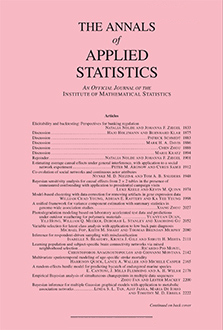Abstract
Electronic health records (EHRs) are increasingly used for clinical and comparative effectiveness research but suffer from missing data. Motivated by health services research on diabetes care, we seek to increase the quality of EHRs by focusing on missing values of longitudinal glycosylated hemoglobin (A1c), a key risk factor for diabetes complications and adverse events. Under the framework of multiple imputation (MI), we propose an individualized Bayesian latent profiling approach to capture A1c measurement trajectories subject to missingness. The proposed method is applied to EHRs of adult patients with diabetes in a large academic Midwestern health system between 2003 and 2013 and had Medicare A and B coverage. We combine MI inferences to evaluate the association of A1c levels with the incidence of acute adverse health events and examine patient heterogeneity across identified patient profiles. We investigate different missingness mechanisms and perform imputation diagnostics. Our approach is computationally efficient and fits flexible models that provide useful clinical insights.
Citation
Yajuan Si. Mari Palta. Maureen Smith. "Bayesian profiling multiple imputation for missing hemoglobin values in electronic health records." Ann. Appl. Stat. 14 (4) 1903 - 1924, December 2020. https://doi.org/10.1214/20-AOAS1378
Information





